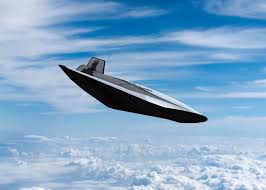
Breaking News
 Heart Attack Risk Halved In Survivors Taking Tailored Vitamin D Doses, Researchers Say
Heart Attack Risk Halved In Survivors Taking Tailored Vitamin D Doses, Researchers Say
 "GPUs Are Sold Out": Nvidia Soars After Blowing Away Results, Projections
"GPUs Are Sold Out": Nvidia Soars After Blowing Away Results, Projections
 The Dearborn Protest Was a Test. If You Felt Hatred, You Failed It.
The Dearborn Protest Was a Test. If You Felt Hatred, You Failed It.
 China has just pushed humanity into a new era of computation.
China has just pushed humanity into a new era of computation.
Top Tech News
 New Gel Regrows Dental Enamel–Which Humans Cannot Do–and Could Revolutionize Tooth Care
New Gel Regrows Dental Enamel–Which Humans Cannot Do–and Could Revolutionize Tooth Care
 Researchers want to drop lab grown brains into video games
Researchers want to drop lab grown brains into video games
 Scientists achieve breakthrough in Quantum satellite uplink
Scientists achieve breakthrough in Quantum satellite uplink
 Blue Origin New Glenn 2 Next Launch and How Many Launches in 2026 and 2027
Blue Origin New Glenn 2 Next Launch and How Many Launches in 2026 and 2027
 China's thorium reactor aims to fuse power and parity
China's thorium reactor aims to fuse power and parity
 Ancient way to create penicillin, a medicine from ancient era
Ancient way to create penicillin, a medicine from ancient era
 Goodbye, Cavities? Scientists Just Found a Way to Regrow Tooth Enamel
Goodbye, Cavities? Scientists Just Found a Way to Regrow Tooth Enamel
 Scientists Say They've Figured Out How to Transcribe Your Thoughts From an MRI Scan
Scientists Say They've Figured Out How to Transcribe Your Thoughts From an MRI Scan
 Calling Dr. Grok. Can AI Do Better than Your Primary Physician?
Calling Dr. Grok. Can AI Do Better than Your Primary Physician?
Stratolaunch hypersonic vehicle to launch from world's largest plane

The Talon-A can be fitted out different payloads and is fully reusable, designed to enable swift, repeatable testing of hypersonic flight technologies for all manner of applications.
The Talon-A measures 28 ft long (8.5 m) with a wingspan of 11.3 ft (3.4 m) and has a total weight of 6,000 pounds (2,722 kg). Stratolaunch says the aircraft will be capable of autonomous take-off from a conventional runway, hitting Mach 6 speeds on long-duration flights, and then landing autonomously on the runway once the mission is complete.
Alternatively, the Talon-A could be lifted into the air aboard Stratolaunch's carrier aircraft, which would release it at a cruising altitude of 35,000 ft (10,000 m). Designed to launch rockets and satellites into low-Earth orbit, the massive carrier aircraft completed its maiden flight last year, and according to the company, would be capable of carrying three Talon-A hypersonic testbed vehicles into the air at once.
Once in the air, the Talon-A can collect data on aerodynamic performance, while the layout of the instruments and sensors can be customized depending on customer needs. It is also designed to carry proprietary and classified payloads that can then be safely recovered for analysis following the flight.

 Unbanked In A Connected World
Unbanked In A Connected World

